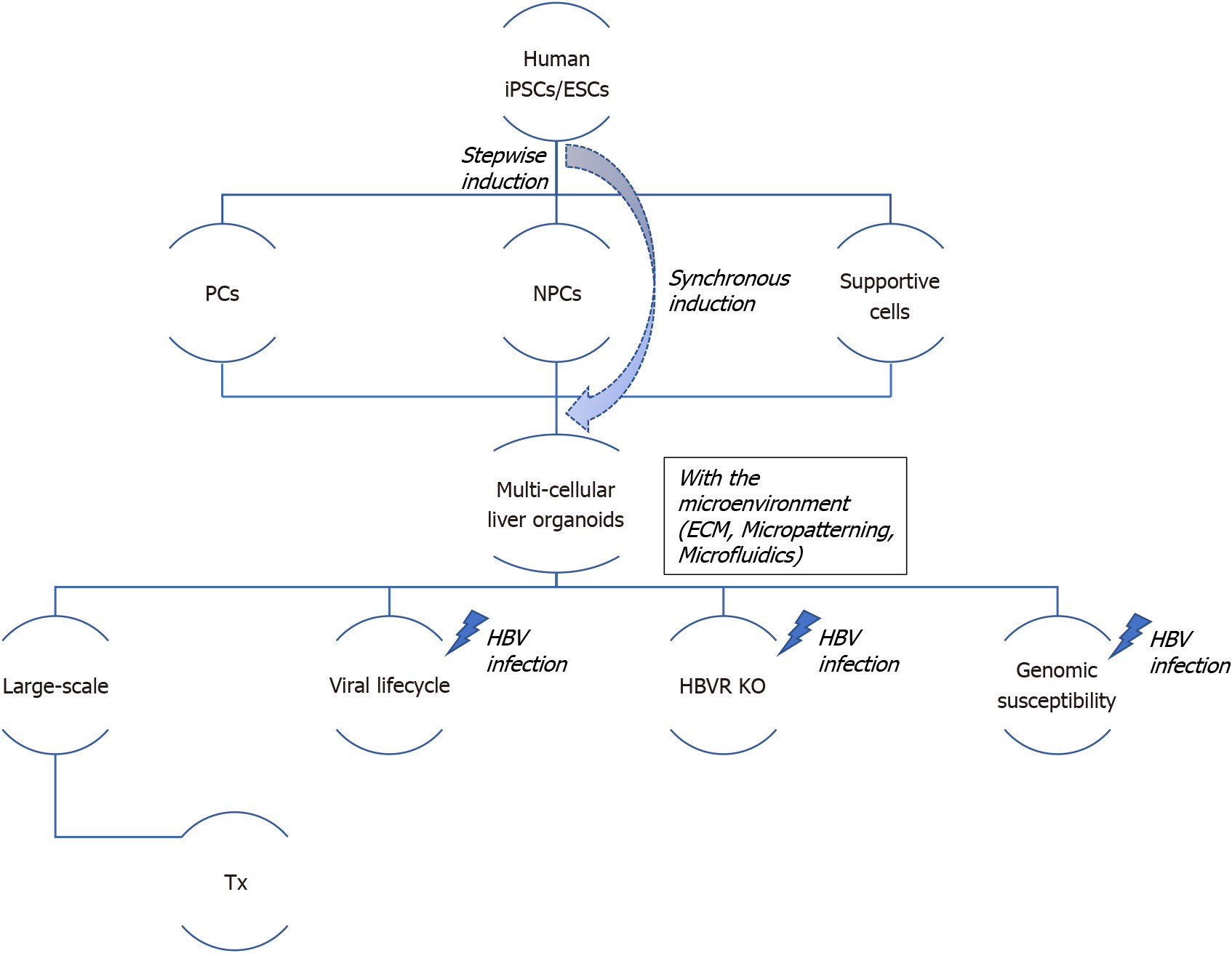Copyright
©The Author(s) 2021.
World J Gastroenterol. Aug 7, 2021; 27(29): 4784-4801
Published online Aug 7, 2021. doi: 10.3748/wjg.v27.i29.4784
Published online Aug 7, 2021. doi: 10.3748/wjg.v27.i29.4784
Figure 1 Schema to generate human liver organoids and strategy regarding their application potential and hepatocyte B virus modeling.
Multi-cellular liver organoids are generated and self-organized with parenchyma cells, non-parenchyma cells, and other hematopoietic or/and neuronal supportive cells after stepwise induction from human induced pluripotent stem cells/embryonic stem cells; in contrast, synchronous induction using a CRISPR-based strategy markedly enhances their hepatic functions and improves their reproducibility and scalability. The personalized and population organoid system may provide a reliable platform for high-throughput hepatocyte B virus (HBV) drug screening, allowing to understand novel key points of the HBV lifecycle, gene editing to knock-out the HBV receptor, and distinguish genomic susceptibility in a large population. Transplantable multi-cellular organoids without the HBV receptor have much potential for future applications. ECM: Extracellular matrix; ESCs: Embryonic stem cells; HBV: Hepatocyte B virus; HBVR: Hepatocyte B virus receptor; iPSCs: Induced pluripotent stem cells; KO: Knock-out; NPCs: Non-parenchyma cells, including Kupffer cells, hepatic stellate cells, and liver sinusoidal endothelial cells; Supportive cells: Such as neuronal cells, hematopoietic cells, and vascular endothelial cells; PCs: Parenchyma cells such as hepatocytes; Tx: Transplantation.
- Citation: Cao D, Ge JY, Wang Y, Oda T, Zheng YW. Hepatitis B virus infection modeling using multi-cellular organoids derived from human induced pluripotent stem cells. World J Gastroenterol 2021; 27(29): 4784-4801
- URL: https://www.wjgnet.com/1007-9327/full/v27/i29/4784.htm
- DOI: https://dx.doi.org/10.3748/wjg.v27.i29.4784









